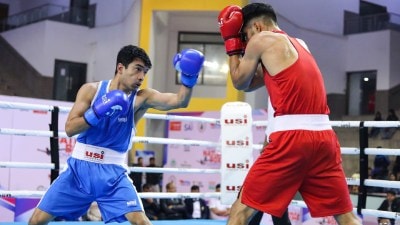Slow poisoning in Panipat
It takes just a drive through Panipat to realise that Haryana8217;s textile dyeing industry has pushed the city to the brink of an environm...

It takes just a drive through Panipat to realise that Haryana8217;s textile dyeing industry has pushed the city to the brink of an environmental disaster. Everywhere, there are stagnant pools of waste and open drains overflowing with coloured water. And, experts say, it8217;s seeping into the ground water.
After years of looking the other way, the state government sat up recently to announce that the dyeing industry would be shifted to a new rehabilitation site outside town.
The Haryana Pollution Control Board HPCB claims it8217;s cracking down on polluters 8212; dyeing units which are releasing untreated water. But dyeing unit owners told The Indian Express HPCB officials do not trouble them as long as they buy plots in the new rehabilitation site.
The result? The over 500 units in town continue to discharge over six million litres per day MLD of effluents, including nitrates, fluorides and heavy metals such as manganese, lead and iron, in quantities well beyond permissible limits.
As for the rehabilitation site on Sector 29 Part II, a casual visit shows the land has barely been developed8212;setting up a unit is a long, long, way away. Admits Dr R.C. Trivedi, Additional Director, Central Pollution Control Board CPCB, 8216;8216;Panipat faces a severe problem, as most of the sewage, including industrial effluents, never leaves the town. Most of it stagnates in pools, and the untreated dyes and chemicals seep into ground water.8217;8217;
CPCB officials said the untreated water is coloured due to the presence of dyes and other organic and inorganic compounds.
H.C. Bains, chairman, HPCB, points his finger at the small-scale dyeing units in the area. 8216;8216;The pollution control board has clamped down on polluting units and even closed down several for not treating effluents,8217;8217; he adds. But, he says it 8216;s difficult to crack down on small units, as several are not registered.
In Shivnagar, Sunil Jain, owner of one such dyeing unit, had installed an effluent treatment plant ETP when the pollution board threatened to shut shop. The ETP is now lying unused, covered with cobwebs. 8216;8216;At a time when we are incurring losses, it is not feasible to treat effluents. For small operators, the costs will increase, making the business unviable,8217;8217; says Jain.
Moreover, the treated water that emerges from the 50-odd large export houses that have installed ETPs ultimately flows into the same untreated waste channels pouring out of the small units. HPCB officials concede that only 30 per cent of industrial effluents flows into the city8217;s sewers and onto treatment plants: the rest flow into open storm water drains and nearby fields.
In 2001, a Central Ground Water Board CGWB study found heavy metal concentration in Panipat8217;s ground water well above standard norms. The study revealed that shallow groundwater had turned yellow and brackish due to excessive presence of organic dyes. 8216;8216;I have never checked whether the coloured water flowing from my unit is harmful or not,8217;8217; admits Jain.
On Jattal Road and Kishanpura, dotted with dyeing units, owners are in panic over the government decision to shift. When you enquire about their business, they quickly point out that they have shifted to handlooms. When you probe further, they get hostile.
Refusing to speak on record, some of them allege that despite the HPCB crackdown, several large units violate norms blatantly after bribing the babus. Says Yash Pal Malik, president, Panipat Dyeing Industries Association, 8216;8216;It8217;s unfortunate that the Haryana Government wants to relocate even the large and medium-sized units that have set up treatment plants at considerable cost.8217;8217;
Initially, there were talks of setting up a common effluent treatment plant for small units, says Malik. 8216;8216;But the government now insists all units have to shift. We have agreed to do so, but the government has not kept its promises.8221;
Association members say rehabilitation won8217;t succeed in its present form. 8216;8216;The rates of plots there are higher and the facilities are inadequate to cover 500 units,8217;8217; says a member. 8216;8216;Tenders have been invited and relocation would take a year or so,8217;8217; says Bains. But with so many contentious issues to be sorted out, that seems unlikely.
As D.S. Saini, Superintendent Hydrologist, North West region, CGWB, puts it, the situation in Panipat is nothing but 8216;8216;slow poisoning8217;8217;. 8216;8216;The government should take immediate steps to stop this.8217;8217;
- 01
- 02
- 03
- 04
- 05































